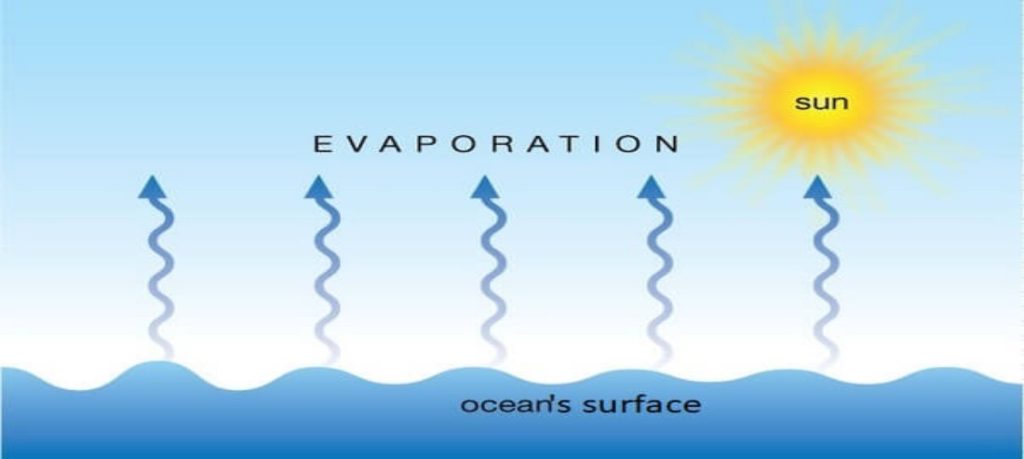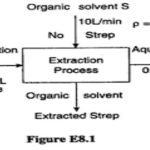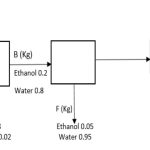Objective: “To concentrate a dilute solution consisting of non volatile solute and volatile solvent”
Properties of evaporating liquids that influence the process of evaporation:
1. Concentration: As the concentration increases, the viscosity and density increases thereby the boiling point of solution increases. The increase in boiling point and viscosity reduces the rates of heat transfer in evaporators.
2. Foaming: Solutions like organic compounds tend to foam during vaporization .The foam is carried away along with vapor leading to heavy entrainment.
3. Scale: Solutions deposit scales on the heating surface .overall heat transfer coefficient drastically decreases and leads to shut down of the evaporators for cleaning of the tubes.
4. Temperature sensitivity: Pharmaceuticals products, fine chemicals and foods are damaged when heated to moderate temperatures for relatively short times. So special techniques are employed to reduce temperature of the liquid and time of heating.
5. Material of construction: Evaporators are made of some kind of steel. however many sols attack ferrous metals and are contaminated by them . Copper, nickel, stainless steels can also be used.
· Single effect evaporation:
The solution to be concentrated flows inside the tubes.The heating medium is steam condensing on metal tubes.Usually the steam enters at 3 atm abs. and boiling liquid is under moderate vacuum.This increases the temperature difference between the steam and boiling liquid.When a single evaporator is used, the vapor from the boiling liquid is condensed and discarded. This is called single effect evaporation.It is simple but utilizes steam ineffectively.To evaporate 1 kg of water from the solution we require 1-1.3 kg of steam.
· Multiple effect evaporation:
Increasing the evaporation per kg of steam by using a series of evaporators between the steam supply and condenser is called multiple effect evaporation
Classification of evaporators:
Evaporation is a process of vaporization of a volatile solvent from a solution in order to increase the concentration of the solute.
(1) Natural circulation evaporators
(a) Long tube vertical falling film evaporator
(b) Long tube vertical rising film evaporator
These are used generally for simple evaporation operations either as single effect or multiple effects.
(2) Forced circulation evaporators
(a) Forced circulation evaporator with horizontal heating element
(b) Forced circulation evaporator with vertical heating element
These are used generally for salting, viscous and scale forming solutions.
(3) Agitated film evaporator
The main advantage of this type is to give high heat transfer coefficients even with very high viscous liquids. This is a modified falling film evaporator. Mechanical agitation is used to reduce the viscosity of very high viscous solutions.
Industry applications:
Long tube vertical rising film evaporator:
These types of evaporators are widely used in industries for handling of foaming, frothy liquors,and used for the production of condensed milk
Long tube vertical falling film evaporator:
These types of evaporators are widely used in industries for concentrating highly heat-sensitive materials such as orange juice, food materials etc. which require short residence times. And used for the production of condensed milk.
Forced circulation evaporators:
These types of evaporators are widely used in industries for salting, viscous and scale forming solutions,and used in crystallizing operations in which it is necessary for the solids to be in suspension.
Agitated film evaporator:
The main advantage of this type is to give high heat transfer coefficients even with very high viscous and heat sensitive liquids such as gelatin, rubber latex, antibiotics and fruit juices. But these are very costly and will be having smaller capacities.
Long vertical tube evaporator
These are two types.
(i) Long vertical tube falling film evaporator
(ii) Long vertical tube rising film evaporator
(i)Long tube vertical (climbing film) rising film evaporator:
Construction:
This consists of a long tubular heating element incorporating the tubes 25 mm to 50 mm and 3 to 10 meters in length. And also it contain at the top a separator or vapor space for removing entrained liquid from the vapor. Deflector is provided just above the tube sheet.
Working:
The feed at near boiling is fed to the bottom of the evaporator. It is then pumped inside the tubes. Steam is provided on the shell side. Liquid and vapor are separated in the vapor separator at the top. Deflector acts as a both primary separator and foam breaker. Multiple effects are used to achieve higher steam economy.
Applications:
These types of evaporators are widely used in industries for handling of foaming, frothy liquors,and used for the production of condensed milk.
(ii)Long tube vertical falling film evaporator:
Construction:
This consists of a long tubular heating element incorporating the tubes 50 mm to 250 mm and 3 to 10 meters in length.
Working:
The feed to the evaporator is fed to the top of the evaporator through efficient liquid distributors. Steam is given on the shell side. The concentrate is collected at the bottom. The same operation is repeated in multiple effects to achieve steam economy.
The main problem in this type of evaporator is that of distributing the liquid uniformly as a film inside the tubes. This is done by a set of perforated metal plates above a carefully leveled tube sheet.
Applications:
These types of evaporators are mostly used in industries for concentrating highly heat-sensitive materials such as orange juice, food materials etc. which require short residence times.


